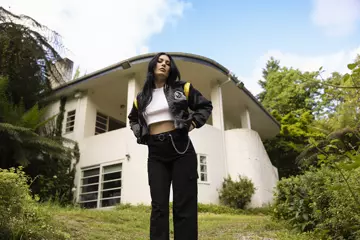Matt Röesner and Adam Trainer had worked together before. Trainer played piano on a couple of Röesner's solo albums, and originally this collaboration was intended to be something similar.
“But then we decided that it would be a good thing to get together and actually do a dedicated record,” Röesner recounts. ”A dedicated collaboration. And the whole genesis of the record was a 50-minute piano improvisation that Adam recorded. And then we took that and added the new layers on top of it to form the tracks.
“The editing of a record like Terrane is quite involved and there is a lot of listening. When you're working on an ambient record you really need to listen to the pieces and sometimes the entire record from start to finish to get an idea of how it's fitting together. So there's a lot of really focused listening that goes into the recording process; working out how the tracks will flow together and how the arrangements in a song can be put together in a way that the shifts are quite subtle. We did a lot of layering of different tracks and we were actually playing over the whole piece and then we went back and it was a process of reduction to allow for the spaces for the sound to move.”
Having worked solo for much of his career, Röesner's finding a lot to like in the new project.
“I think it allows a bit more freedom to collaborate with someone,” he says. “Even though you may think that when you work with yourself, you've got 100% control of the work, I do find with my solo work that can become a little bit limiting at times. I get halfway through some pieces of music and then think, 'Oh gee, it would be good if I had someone who was good at playing piano', for instance. And that's how the collaboration with Adam started. I find that having an extra set of ears, it makes the editing and recording process much, much easier as well. Because you've got those on-the-spot ideas being thrown around.”
With so many small but important elements tying the compositions together, it's been a challenge bringing the album into the live realm, Röesner says.
“To be honest, it's very difficult to replicate the record live when there's only the two of us on stage. There are so many layers and instruments that have been put into the record, it's just physically not possible to do it. So at the start of the process of preparing for the tour, we sat down and thought about how we were going to translate the tracks live and what instruments were key to at least getting part of the message across. We toyed with the idea of using the laptop with a number of different samples and triggering those samples live. That died a very quick death, because we realised it just didn't allow very much flexibility in the set.
Don't miss a beat with our FREE daily newsletter
“So what we're trying to do is just to create the feeling of the record in the live set. We've incorporated a film, so there's a visual element to what we're doing. The mood's very important, and the addition of the film did help establish that. It's been hard to play any tracks off the album because of the number of layers, but we've managed to get a couple of pieces that we've converted into live versions. As soon as we discovered that we couldn't play it live, we knew that it was going to be really difficult… I think essentially what we're doing is writing the next record right now, by playing it live.”
















